The Rustic Charm of Clay Pavers
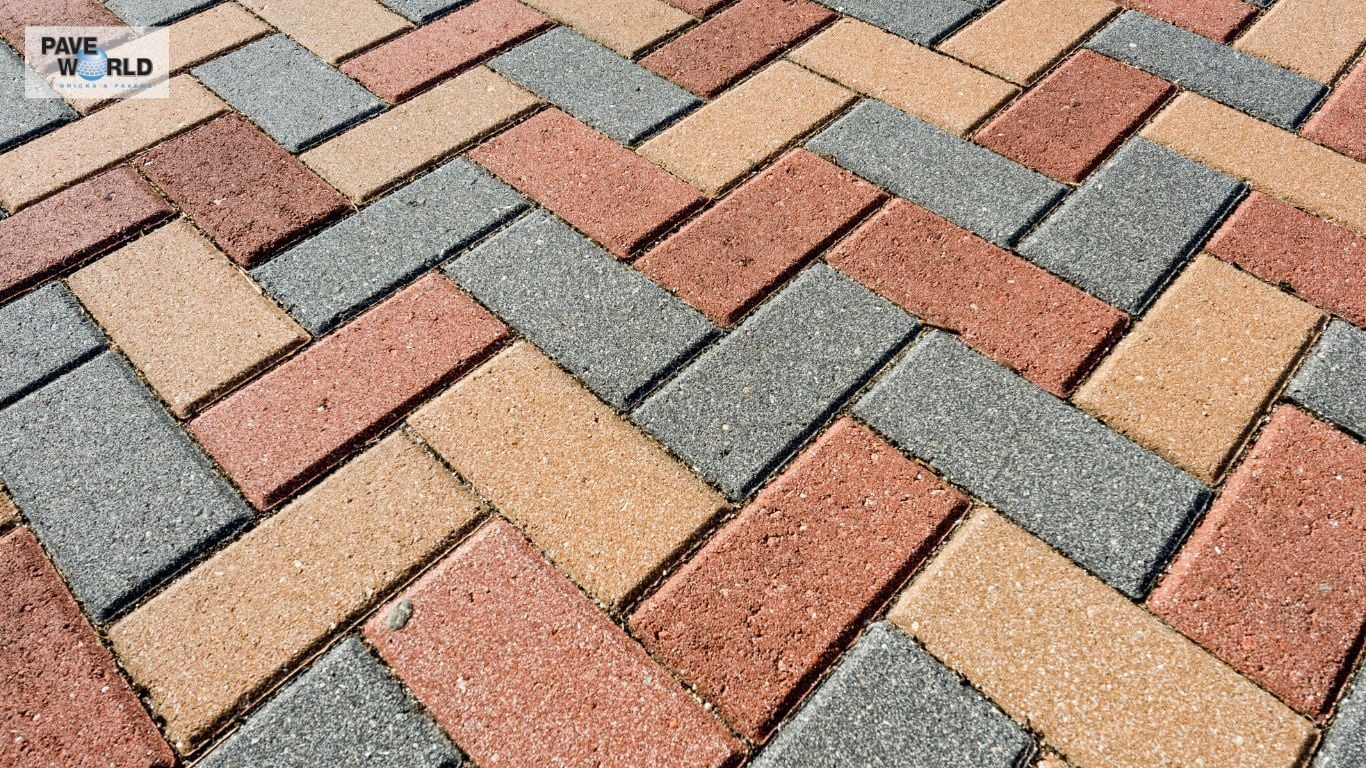)
For Melburnians seeking to imbue their outdoor spaces with a touch of enduring character and warmth, clay pavers offer an unparalleled aesthetic appeal. Far from being a fleeting trend, the use of clay in paving stretches back centuries, a testament to its durability, versatility, and inherent beauty. At Pave World, Melbourne’s leading paving and stone supplier, we’ve witnessed firsthand the enduring popularity of clay pavers, and we understand why they continue to captivate homeowners and landscape designers alike. This article delves into the rustic charm of clay pavers, exploring their unique qualities and why they remain a superior choice for creating truly distinctive outdoor environments in Melbourne.
The Allure of Natural Beauty
One of the most compelling aspects of clay pavers is their natural origin. Crafted from the earth itself, these pavers possess an inherent warmth and richness of colour that synthetic materials simply cannot replicate. The subtle variations in tone and texture within each batch of clay pavers contribute to a unique, handcrafted feel, ensuring that no two installations are exactly alike. This natural aesthetic blends seamlessly with a wide range of architectural styles, from traditional Victorian terraces to contemporary modern homes, adding a touch of timeless elegance to any Melbourne property.
Earthy Tones: The spectrum of colours available in clay pavers, ranging from rich reds and warm browns to subtle ochres and creams, evokes a sense of connection to the natural landscape. These earthy tones create a welcoming and inviting atmosphere in gardens, pathways, and driveways.
Textural Interest: The slightly irregular surfaces and edges of many clay pavers add a tactile dimension to outdoor spaces. This subtle texture not only enhances their visual appeal but also provides excellent grip underfoot, making them a practical choice for high-traffic areas.
Aged Grace: Unlike some modern paving materials that can appear stark and uniform, clay pavers develop a beautiful patina over time. This natural ageing process enhances their character, adding depth and richness to their colour and texture, further contributing to their rustic charm.
Durability and Longevity: An Investment for the Future
Beyond their aesthetic appeal, clay pavers are renowned for their exceptional durability and longevity. Fired at high temperatures, they become incredibly strong and resilient, capable of withstanding the harsh Australian climate, including Melbourne’s unpredictable weather patterns.
Weather Resistance: Clay pavers are resistant to frost, heat, and heavy rainfall, making them an ideal choice for Melbourne’s diverse seasons. They won’t crack or fade easily, ensuring that your paved areas maintain their beauty for years to come.
High Load-Bearing Capacity: Their inherent strength allows clay pavers to withstand significant weight, making them suitable for driveways and other areas subject to vehicular traffic. When properly installed, they can provide decades of reliable service.
Low Maintenance: Compared to some other paving options, clay pavers require minimal maintenance. Regular sweeping and occasional washing are usually sufficient to keep them looking their best. Their inherent resistance to stains and fading further reduces the need for intensive upkeep.
Versatility in Design: Creating Unique Outdoor Spaces
The versatility of clay pavers allows for endless design possibilities, enabling Melburnians to create truly unique and personalised outdoor spaces. Their range of shapes, sizes, and laying patterns offers a high degree of creative freedom.
Variety of Shapes and Sizes: Clay pavers are available in a multitude of shapes, including traditional rectangles, squares, and more intricate geometric forms. This variety allows for the creation of visually interesting patterns and designs.
Endless Laying Patterns: From classic herringbone and basketweave patterns to more contemporary linear and offset designs, the way clay pavers are laid can dramatically impact the overall look and feel of an outdoor space. Experimenting with different patterns can add visual interest and define different areas within a garden or landscape.
Integration with Other Materials: Clay pavers complement a wide range of other landscaping materials, such as natural stone, timber, and gravel. This allows for the creation of layered and textured outdoor environments that are both aesthetically pleasing and functional.
Sustainability: An Environmentally Conscious Choice
In an increasingly environmentally conscious world, the natural composition and manufacturing process of clay pavers make them a sustainable paving option.
Natural Materials: Clay is a naturally occurring and abundant resource. The use of clay pavers minimises the reliance on synthetic materials and reduces the environmental impact associated with their production.
Durability and Longevity: The long lifespan of clay pavers means less frequent replacement, reducing waste and the embodied energy associated with manufacturing new materials.
Permeability: Some clay paver installation techniques allow for greater permeability compared to solid surfaces like concrete or asphalt. This can help to reduce stormwater runoff, improve drainage, and replenish groundwater.
Enhancing Your Melbourne Lifestyle with Clay Pavers
For Melbourne homeowners, investing in clay pavers is an investment in both the beauty and functionality of their property. Whether you’re looking to create a welcoming front entrance, a charming garden path, a durable driveway, or an inviting outdoor entertaining area, clay pavers offer a solution that is both aesthetically pleasing and built to last.
Creating Inviting Pathways: Clay pavers can transform simple walkways into charming garden paths, adding character and guiding visitors through your outdoor space. Their natural texture provides a good grip, ensuring safe passage in all weather conditions.
Designing Stunning Driveways: The durability and load-bearing capacity of clay pavers make them an excellent choice for driveways. Their timeless appeal adds kerb appeal to your property and creates a welcoming first impression.
Crafting Elegant Patios and Entertainment Areas: Clay pavers provide a beautiful and durable surface for patios and outdoor entertaining areas. Their natural warmth creates a comfortable and inviting atmosphere for gatherings with family and friends.
Defining Garden Features: Clay pavers can be used to define different areas within your garden, such as creating borders around flowerbeds or pathways leading to focal points. Their natural aesthetic blends seamlessly with planting and other garden elements.
Why Choose Pave World for Your Clay Paver Needs in Melbourne?
At Pave World, we pride ourselves on being Melbourne’s leading paving and stone supplier. We offer an extensive range of high-quality clay pavers in various colours, shapes, and sizes to suit any aesthetic and project requirement. Our experienced team can provide expert advice and guidance to help you select the perfect clay pavers for your Melbourne home.
Extensive Selection: We stock a wide variety of clay pavers from reputable manufacturers, ensuring that you have access to the best quality products available in Melbourne.
Expert Advice: Our knowledgeable team has years of experience in the paving industry and can provide you with tailored advice on product selection, design considerations, and installation best practices.
Quality Assurance: We are committed to supplying only the highest quality paving materials, ensuring that your investment in clay pavers will stand the test of time.
Customer Satisfaction: At Pave World, customer satisfaction is our top priority. We strive to provide exceptional service and support throughout your paving project.
Embrace the Enduring Appeal of Clay Pavers
For Melburnians seeking to enhance their outdoor spaces with a touch of timeless elegance, durability, and natural charm, clay pavers are an exceptional choice. Their inherent beauty, robust nature, and design versatility make them a superior paving solution for a wide range of applications. Visit Pave World, Melbourne’s leading paving and stone supplier, today to explore our extensive collection of clay pavers and discover how they can transform your outdoor living experience. Embrace the rustic charm and create an outdoor space that you’ll enjoy for years to come.
Contact Pave World at salestl@paveworld.com.au or (03) 9390 8100 for expert advice and solutions.
| Posted in:paving |
Easter Sale!
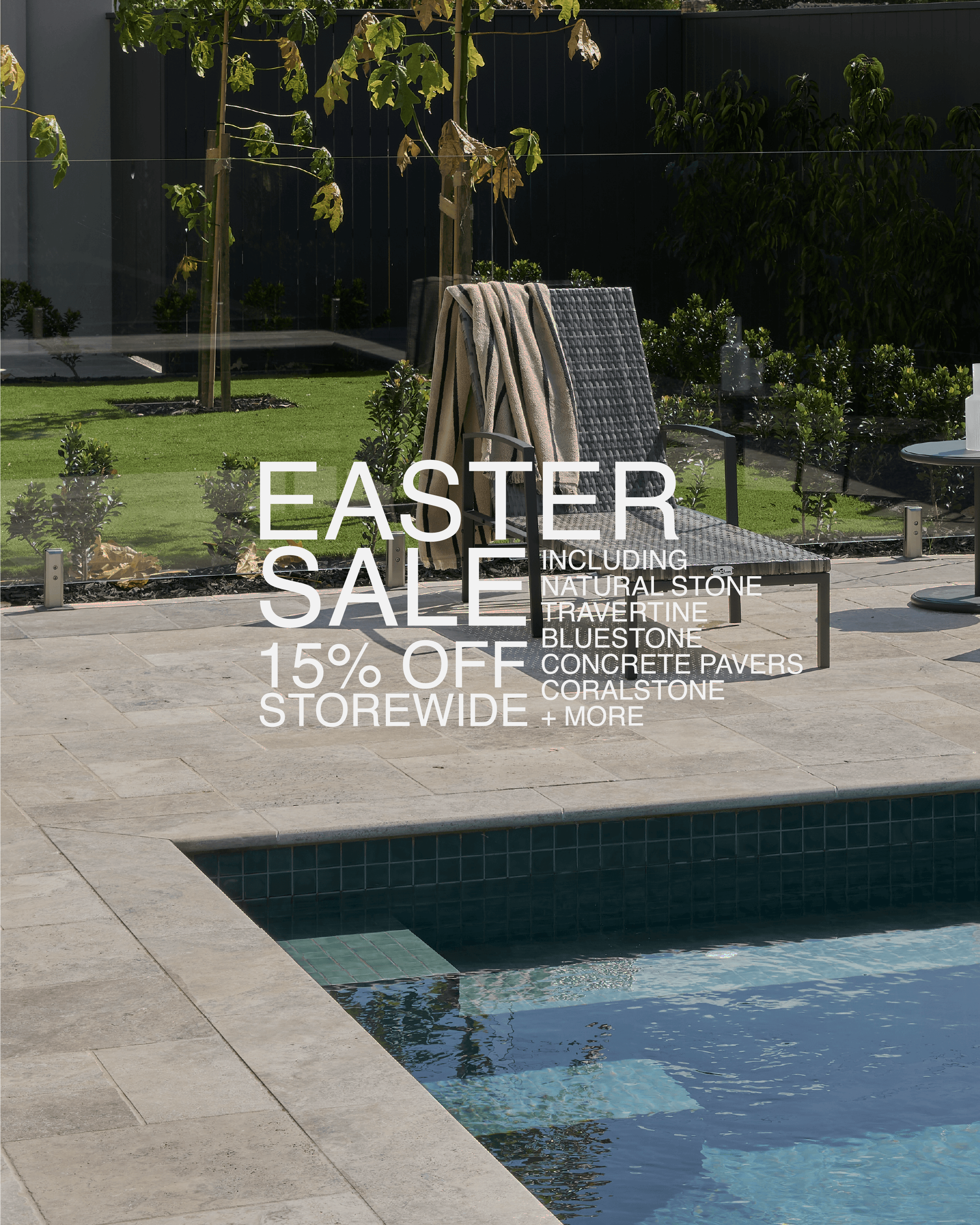)
Looking to kick off your outdoor project? This Easter Saturday, we’re making it easier than ever to get started – with 15% OFF all full-priced, for one day only!
Whether you're planning a garden path, a patio upgrade, or a full backyard transformation, this is the perfect time to stock up on premium-quality materials – at a fraction of the price.
Where to Find Us:
You can access the Easter Saturday sale at any of our three convenient locations:
Campbellfield
Mordialloc
Pop in, chat with our expert team, and take advantage of this limited-time offer!
Note: Taylors Lakes location closed on Easter Saturday
| Posted in:natural stonepaving |
Concrete Pavers: A Cost Effective Solution for Driveways
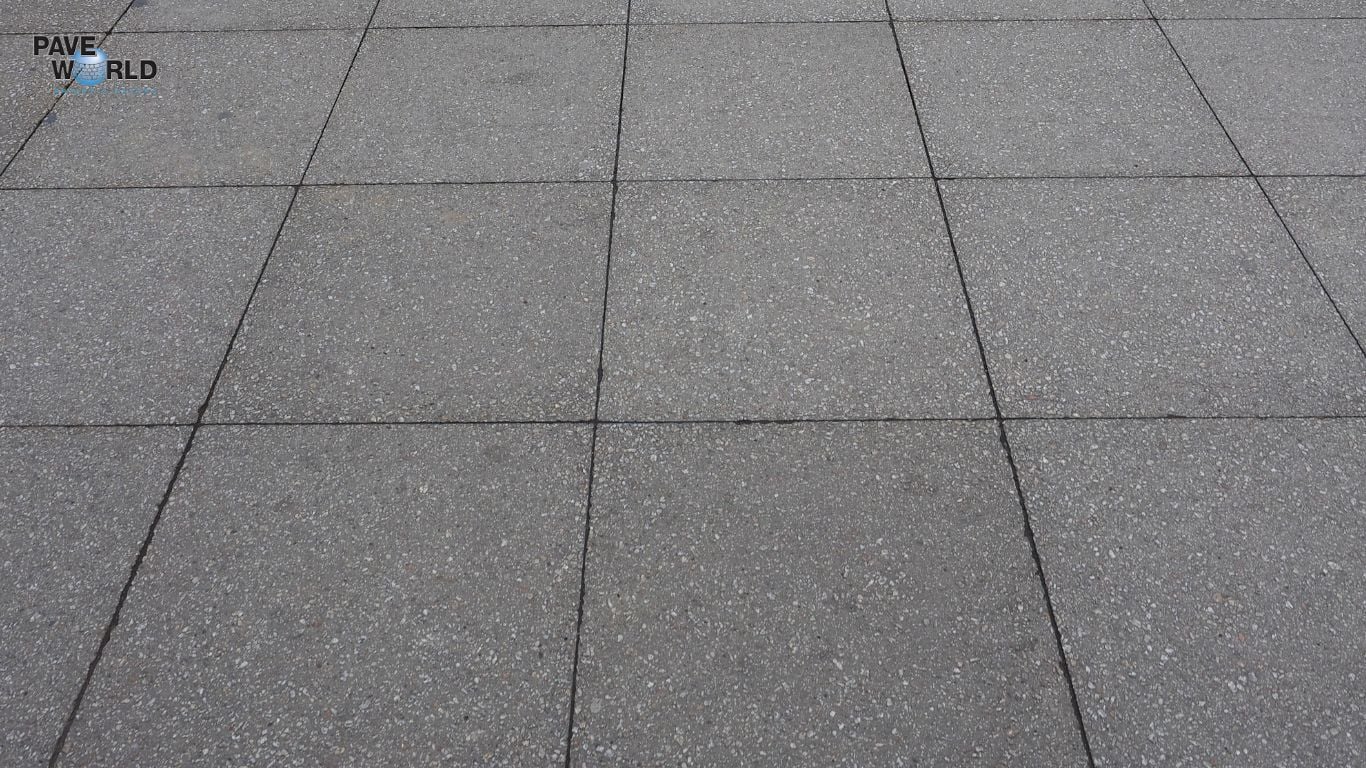)
For Melbourne homeowners seeking a durable, aesthetically pleasing, and cost-effective driveway solution, concrete pavers stand out as a clear winner. Forget the bland, grey expanses of traditional concrete; modern pavers offer a vast array of colours, textures, and patterns, transforming your driveway into a stunning feature that enhances your property’s kerb appeal. At Pave World, Melbourne’s leading paving and stone supplier, we’ve witnessed firsthand the growing popularity of concrete pavers, and for good reason.
Why Choose Concrete Pavers for Your Melbourne Driveway?
The decision to install a new driveway is a significant investment. It’s crucial to weigh up the pros and cons of different materials to ensure you’re making the right choice for your needs and budget. Here’s why concrete pavers consistently rank high amongst Melbourne homeowners:
Cost-Effectiveness:
While the initial cost may seem comparable to poured concrete, pavers offer long-term savings.
Individual pavers are easier to replace if damaged, minimising extensive and costly repairs.
The longevity of quality concrete pavers means you won’t be facing frequent replacements.
Durability and Strength:
Concrete pavers are manufactured under high pressure, resulting in a dense and robust material.
They can withstand heavy loads and extreme weather conditions, crucial for Melbourne’s fluctuating climate.
Properly installed pavers are less prone to cracking and shifting compared to poured concrete.
Versatility in Design:
Concrete pavers come in a remarkable range of colours, shapes, and sizes, allowing for personalised designs.
You can create intricate patterns and borders, complementing your home’s architectural style.
The ability to mix and match pavers allows for unique and eye-catching driveway designs.
Ease of Installation and Maintenance:
Pavers are relatively straightforward to install, reducing labour costs.
Damaged pavers can be easily replaced without disrupting the entire driveway.
Maintenance is minimal, typically involving occasional sweeping and pressure washing.
Increased Property Value:
A well-designed and professionally installed paver driveway significantly enhances kerb appeal.
This added aesthetic value can translate to a higher property value, making it a worthwhile investment.
The wide range of available colours allows for designs that compliment existing landscaping and house colours.
Navigating Melbourne's Climate with Concrete Pavers
Melbourne’s weather can be unpredictable, ranging from scorching summers to chilly winters and heavy rainfall. This variability demands a driveway material that can withstand the elements. Concrete pavers excel in this regard:
Drainage:
The gaps between pavers allow for natural drainage, preventing water pooling and potential damage.
This is particularly beneficial during Melbourne’s heavy downpours, reducing the risk of flooding.
This drainage also reduces the risk of slippery surfaces in wet weather.
Temperature Resistance:
Concrete pavers are designed to withstand extreme temperature fluctuations without cracking or warping.
This ensures your driveway remains stable and aesthetically pleasing throughout the year.
UV Resistance:
Quality concrete pavers are manufactured with UV-resistant pigments, preventing fading over time.
This ensures your driveway retains its vibrant colour and appearance for years to come.
Choosing the Right Pavers for Your Melbourne Home
At Pave World, we understand that selecting the right pavers can be overwhelming. That’s why our experienced team is dedicated to providing expert advice and guidance. Here are some factors to consider:
Style and Colour:
Consider your home’s architectural style and the surrounding landscape.
Choose colours and patterns that complement your existing aesthetic.
Darker colours can absorb more heat, whereas lighter colours reflect it.
Size and Shape:
Select paver sizes and shapes that suit the size and shape of your driveway.
Larger pavers can create a more modern and streamlined look, while smaller pavers allow for intricate patterns.
Texture and Finish:
Consider the texture and finish of the pavers, as this can impact both aesthetics and functionality.
Textured pavers provide better grip, particularly in wet conditions.
Smooth pavers are easier to clean.
Budget:
Determine your budget and choose pavers that align with your financial constraints.
Remember to factor in installation costs and potential long-term savings.
Quality:
Always choose high-quality pavers from reputable suppliers like Pave World to ensure longevity.
Lower-quality pavers are more prone to cracking and colour fading.
Local Council Regulations:
Always check with your local Melbourne council regarding any regulations or permits required for driveway installation.
Your Partner in Creating Stunning Driveways
As Melbourne’s leading paving and stone supplier, Pave World is committed to providing homeowners with high-quality concrete pavers and expert advice. Our extensive range of pavers ensures you’ll find the perfect solution for your driveway project. We pride ourselves on our:
Extensive Product Range: We offer a vast selection of concrete pavers in various colours, shapes, sizes, and textures.
Expert Advice: Our knowledgeable team is always on hand to provide guidance and assistance.
Competitive Pricing: We offer competitive prices without compromising on quality.
Reliable Service: We are committed to providing reliable and efficient service to our customers.
Investing in concrete pavers for your Melbourne driveway is a decision you won’t regret. With their durability, versatility, and cost-effectiveness, they offer a practical and aesthetically pleasing solution that will enhance your home’s value and kerb appeal. Contact Pave World today to explore our extensive range of concrete pavers and turn your driveway dreams into reality.
Contact Pave World at salestl@paveworld.com.au or (03) 9390 8100 for expert advice and solutions.
| Posted in:concretepaving |
Pool Coping Materials: What’s Best for Your Pool?
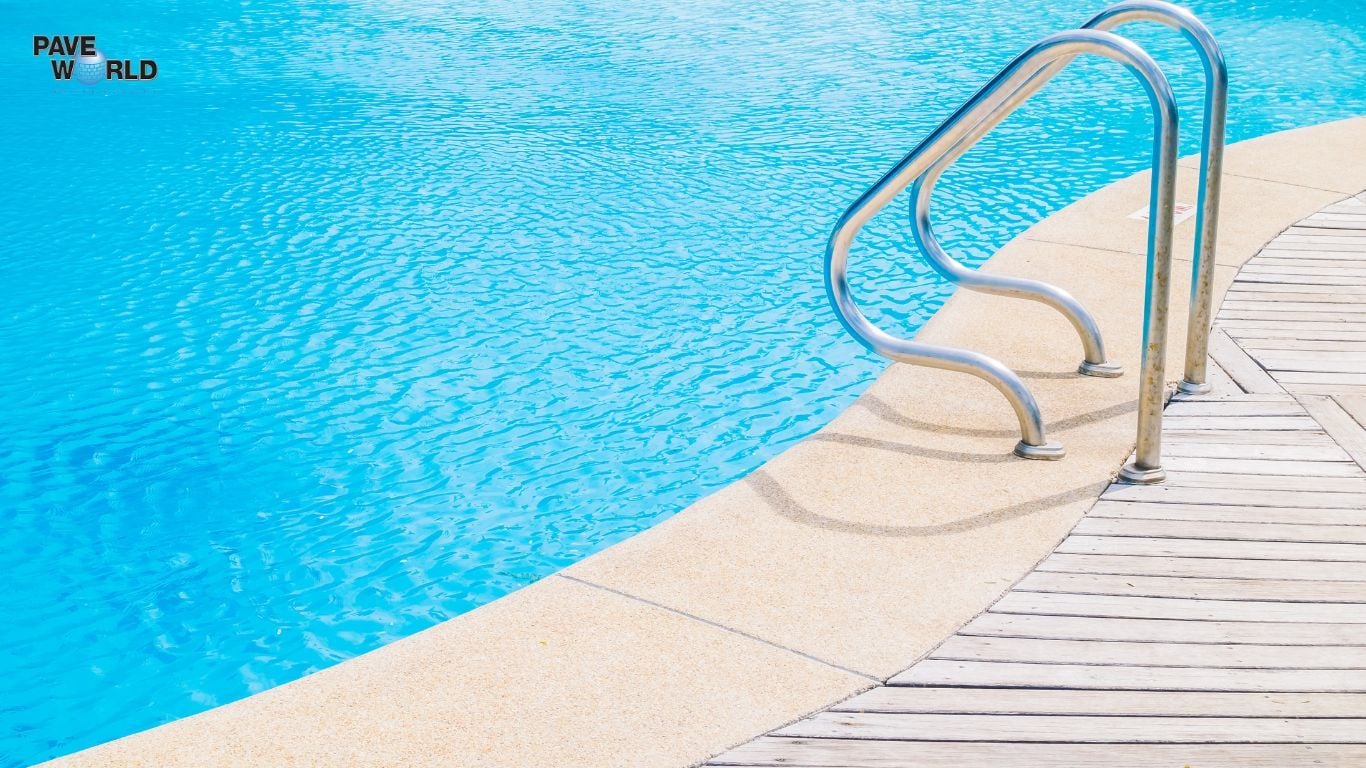)
Creating the perfect pool area in your Melbourne backyard is a blend of functionality and aesthetics. The right pool coping not only enhances the visual appeal but also ensures safety and longevity. With a plethora of materials available, making an informed decision can be overwhelming. At Pave World, Melbourne’s leading paving and stone supplier, we understand the importance of selecting the ideal coping to complement your pool and lifestyle. Let’s delve into the various options and consider what’s best for your aquatic haven.
Understanding Pool Coping and Its Importance
Before exploring material choices, it’s crucial to understand what pool coping is and why it matters. Pool coping is the cap or edging that surrounds the pool's edge, separating the pool shell from the surrounding decking or patio. Its primary functions include:
Safety: Providing a non-slip surface for swimmers to grip onto when entering or exiting the pool.
Protection: Preventing water from splashing behind the pool shell and damaging the surrounding structure.
Aesthetics: Enhancing the overall visual appeal of the pool area, creating a cohesive and polished look.
Comfort: Providing a comfortable surface to sit on or hold onto.
Natural Stone: Timeless Elegance and Durability
Natural stone coping offers a luxurious and timeless appeal, making it a popular choice for Melbourne homeowners. Each piece is unique, showcasing natural variations in colour and texture. Common natural stone options include:
Granite: Known for its strength and durability, granite is resistant to weathering and chemicals. It offers a sophisticated look with its speckled appearance.
Sandstone: With its warm, earthy tones, sandstone creates a relaxed and inviting atmosphere. It’s naturally porous, so proper sealing is essential.
Limestone: Offering a smooth, elegant finish, limestone is available in various colours and textures. It’s relatively soft, requiring careful maintenance.
Bluestone: A Melbourne favourite, bluestone’s cool grey tones provide a contemporary and stylish look. It’s durable and slip-resistant, making it ideal for pool areas.
Concrete: Versatility and Affordability
Concrete coping is a versatile and cost-effective option, offering a wide range of design possibilities. It can be moulded into various shapes and sizes and coloured to match your desired aesthetic.
Precast Concrete: These pavers are manufactured in controlled environments, ensuring consistent quality and uniformity. They’re available in various finishes, including smooth, textured, and exposed aggregate.
Poured Concrete: This option allows for seamless integration with the surrounding decking or patio. It can be stamped or coloured to mimic natural stone or other materials.
Bullnose Concrete: This rounded edge profile is a popular choice for pool coping due to its safety and comfort. It minimises sharp edges and provides a smooth surface for gripping.
Porcelain Tiles: Modern Sophistication and Low Maintenance
Porcelain tiles are a modern and sophisticated option for pool coping, offering a sleek and contemporary look. They’re known for their low maintenance and resistance to stains and fading.
Outdoor Porcelain Tiles: Specifically designed for outdoor use, these tiles are frost-resistant and slip-resistant. They’re available in various sizes, colours, and textures, including those that mimic natural stone.
Large Format Tiles: These tiles create a seamless and minimalist look, enhancing the visual appeal of the pool area. They minimise grout lines, making them easy to clean.
Factors to Consider When Choosing Pool Coping
Selecting the right pool coping involves considering several factors to ensure it meets your needs and preferences:
Safety: Opt for non-slip materials with rounded edges to minimise the risk of accidents.
Durability: Choose materials that can withstand Melbourne’s variable climate, including heat, rain, and frost.
Maintenance: Consider the maintenance requirements of each material, including cleaning and sealing.
Aesthetics: Select a material that complements your pool and surrounding landscape, creating a cohesive and visually appealing look.
Budget: Determine your budget and explore options that offer the best value for your investment.
Colour: Consider the colour of your pool's interior, and choose a coping colour that complements the water's appearance.
Your Partner in Creating the Perfect Pool Area
At Pave World, we understand that choosing the right pool coping is a significant investment. Our extensive range of high-quality paving and stone materials ensures you find the perfect option for your Melbourne pool. Our expert team can provide personalised advice and guidance, helping you make informed decisions that align with your style and budget. We can help you realise your dream pool area.
We have a wide range of natural stone, concrete, and porcelain tiles, which are perfect for any pool coping project. Our products are of the highest quality, and our prices are competitive. We pride ourselves on our customer service, and we are always happy to help our customers with any questions they may have.
When it comes to creating your ideal pool area, you want quality products and reliable advice. Pave World can supply all of your pool coping needs. We will help you create a beautiful and functional space that you and your family will enjoy for years to come.
Contact Pave World at salestl@paveworld.com.au or (03) 9390 8100 for expert advice and solutions.
| Posted in:pool coping |
Benefits of Natural Stone Pavers in High Traffic Areas
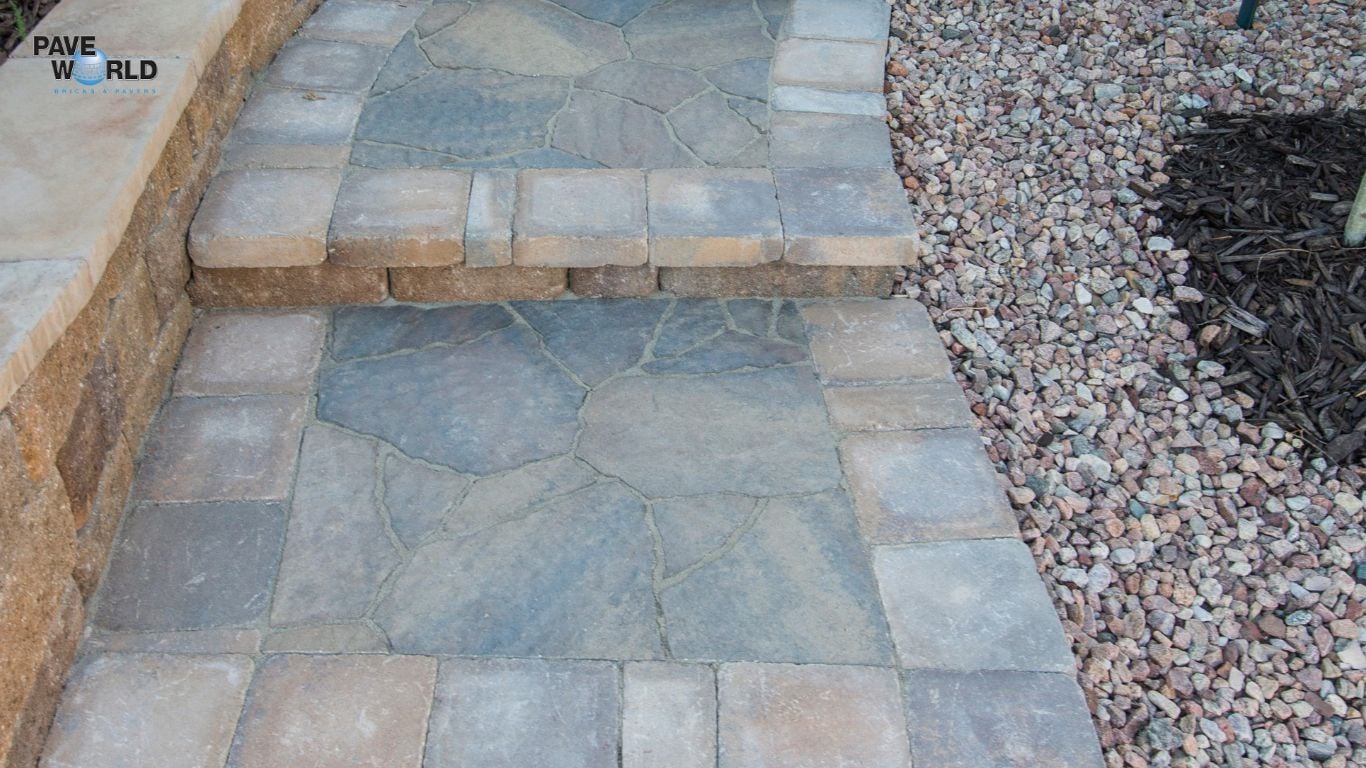)
In Melbourne, where foot traffic is a constant, especially around homes and commercial spaces, choosing the right paving material is crucial. Durability, aesthetics, and safety are paramount. Natural stone pavers offer a robust and visually appealing solution, particularly in high-traffic zones. At Pave World, Melbourne’s leading paving and stone supplier, we’ve seen firsthand how these pavers transform spaces, blending practicality with timeless beauty. Let’s delve into the myriad benefits of choosing natural stone pavers for your high-traffic areas.
Unmatched Durability: Withstanding the Test of Time
One of the most significant advantages of natural stone pavers is their inherent strength and resilience. Unlike concrete or other manufactured materials, natural stone is formed over millennia, making it exceptionally durable. This translates to a longer lifespan, even under the constant pressure of heavy foot traffic, vehicles, or equipment.
Resistance to Wear and Tear: Natural stone pavers are incredibly resistant to abrasion and weathering. This means they can withstand the constant friction from foot traffic and the harsh Melbourne climate without showing significant signs of wear. This is particularly important for pathways, driveways, and commercial entrances.
High Load-Bearing Capacity: Stone pavers, especially those like granite or bluestone, possess a high load-bearing capacity. This makes them ideal for driveways and areas where heavy vehicles may pass. They can handle the weight without cracking or deforming, ensuring long-term structural integrity.
Minimal Maintenance: While all paving requires some level of upkeep, natural stone pavers generally require minimal maintenance. Regular sweeping and occasional cleaning are usually sufficient to keep them looking their best. This reduces the long-term cost and effort associated with maintaining high-traffic areas.
Aesthetic Appeal: Enhancing Melbourne’s Architectural Landscape
Beyond their practical benefits, natural stone pavers offer a unique aesthetic appeal that can elevate the look of any property. Their natural variations in colour, texture, and pattern create a sense of sophistication and timelessness.
Natural Variation and Unique Character: Each stone paver is unique, with variations in colour and texture that add character and depth to the paved surface. This natural variation creates a visually appealing and organic look, enhancing the overall aesthetic of the space.
Versatility in Design: Natural stone pavers come in a wide range of colours, sizes, and finishes, allowing for diverse design possibilities. Whether you prefer a rustic, traditional look or a sleek, contemporary design, there’s a natural stone paver to suit your style. Pave World offers a wide selection to cater to every design preference.
Enhanced Property Value: Installing natural stone pavers can significantly enhance the curb appeal and value of your property. The timeless beauty and durability of stone pavers make them a desirable feature for potential buyers, making it a worthwhile investment.
Safety and Functionality: Prioritising User Experience
In high-traffic areas, safety and functionality are paramount. Natural stone pavers offer several features that contribute to a safer and more user-friendly environment.
Slip Resistance: Many natural stone pavers, particularly those with a textured or honed finish, offer excellent slip resistance. This is crucial in areas prone to moisture, such as pool surrounds or outdoor pathways. This helps to prevent accidents and ensure the safety of pedestrians.
Thermal Properties: Natural stone pavers have excellent thermal properties, meaning they don’t retain heat as much as other materials. This is particularly beneficial in Melbourne’s hot summers, as it keeps paved surfaces cooler and more comfortable to walk on.
Durability in Melbourne’s Weather: Melbourne's weather can be unpredictable, but natural stone pavers can handle it. They are resistant to frost damage, ensuring that they maintain their structural integrity even in the coldest months. This is a crucial consideration for outdoor paving in Melbourne.
Environmental Considerations: Sustainable Paving Solutions
Choosing natural stone pavers also aligns with sustainable building practices. Natural stone is a natural resource, and its extraction and processing generally have a lower environmental impact compared to manufactured materials.
Natural and Sustainable Material: Natural stone is a naturally occurring material, requiring minimal processing compared to manufactured pavers. This reduces the energy consumption and carbon footprint associated with its production.
Long Lifespan and Reduced Replacement: The durability of natural stone pavers means they have a longer lifespan, reducing the need for frequent replacements. This reduces waste and conserves resources.
Local Sourcing: Pave World prioritises sourcing natural stone from reputable suppliers, often within Australia. This reduces the environmental impact associated with transportation and supports local industries.
Your Melbourne Partner in Quality Stone
At Pave World, we understand the importance of quality paving materials for Melbourne homes and businesses. We pride ourselves on offering a wide range of premium natural stone pavers, sourced from the best quarries around the world. Our knowledgeable staff can provide expert advice and guidance to help you choose the perfect pavers for your project.
Extensive Range of Natural Stone Pavers: We offer a diverse selection of natural stone pavers, including bluestone, granite, sandstone, and limestone, in various colours, sizes, and finishes.
Expert Advice and Guidance: Our experienced team can provide personalised advice and recommendations to help you choose the right pavers for your specific needs and preferences.
Quality Assurance: We are committed to providing high-quality natural stone pavers that meet the highest standards of durability, aesthetics, and safety.
Melbourne Focused: We prioritise Melbourne's needs and climate. We understand the specific requirements of Melbourne properties and are dedicated to providing paving solutions that are both practical and aesthetically pleasing.
Choosing natural stone pavers for high-traffic areas in Melbourne is a wise investment. Their durability, aesthetic appeal, safety features, and environmental benefits make them an ideal choice for any property. Contact Pave World at salestl@paveworld.com.au or (03) 9390 8100 for expert advice and solutions.
| Posted in:natural stonepaving |
)




